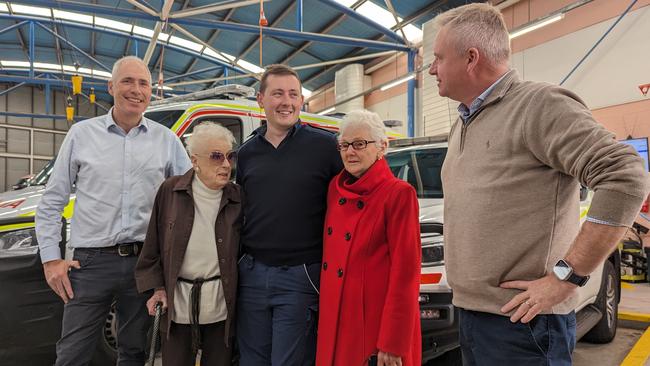Tasmanian hospitals: June 2023 dashboard released as Community Paramedics divert 1260 patients in less than one year
Tasmania’s latest health dashboard reveals mild improvement in several measures, while the impact of a community paramedics program has seen hundreds diverted from our under-pressure hospitals.

Tasmania
Don't miss out on the headlines from Tasmania. Followed categories will be added to My News.
Tasmania’s latest health system dashboard figures have shown a declining elective surgery waitlist, a reduced median wait time for ambulances and no change on the percentage of emergency department patients seen within four hours.
The news comes as Premier and Health Minister Jeremy Rockliff feted the Community Paramedics program, introduced last August, saying the 12 paramedics across the state had made 2100 call-outs and diverted 1260 lower-acuity patients from the state’s hospitals.
The latest health system dashboard figures for May were released on Friday.
Among the key measures, the median emergency response time for ambulances reduced to 13.8 minutes from 14.2 minutes – the “lowest in 18 months,” according to Mr Rockliff – the elective surgery waitlist lowered to 8114, down from 8233 in April, and 53 per cent of patients left hospital emergency departments within four hours, the same as in April.
Across the state, 61 per cent of elective surgery patients were seen in the clinically recommended time frame – down a percentage point from April.
Mr Rockliff described the stats overall as “really welcome news”.

He said a key program in reducing the pressure on ambulances and hospitals, both of which received a greater number of call-outs/ presentations in May than April, was the Community Paramedics program, introduced last August by the state government.
He said that the 12 paramedics, representing 9 FTE positions across the state, had made 2100 call-outs since its inception.
Of those, 60 per cent of patients, 1260, were able to be treated in their homes.
“It’s great that they’ve been able to support Tasmanians in need in that lower acuity environment because what that does is it frees up the paramedics and the ambulances for emergency and urgent care,” Mr Rockliff said.
Gary White, acting executive director of Ambulance Tasmania, said emergency response ambulances, crewed by two paramedics, typically were only able to treat 20–23 per cent of patients in their own home, making the program “a significant change in the way we deliver care”.
“It takes a load off our emergency resources,” Mr White said.
Community paramedic Sebastian Groves, a former nurse who was one of the first trained under the program, said that not only could he treat people in their homes, he could also refer them to GPs and other community services.
“I can spend as long as I want on-scene and get to know the community a bit better,” he said.
Launceston woman Miki Pearce said that Mr Groves attended her house in April after she suffered a fall in the wake of a hospital discharge, and he returned the following day for a check-in.
“Seb’s been wonderful... There’s not a thing he hasn’t done,” she said.
Heather Elphick said that Mr Groves’ attended her residence to look after her ailing 94-year-old husband, who has sadly since passed.
“He sat with him for two hours because there were no ambulances available,” Ms Elphick said.
More Coverage
Originally published as Tasmanian hospitals: June 2023 dashboard released as Community Paramedics divert 1260 patients in less than one year





